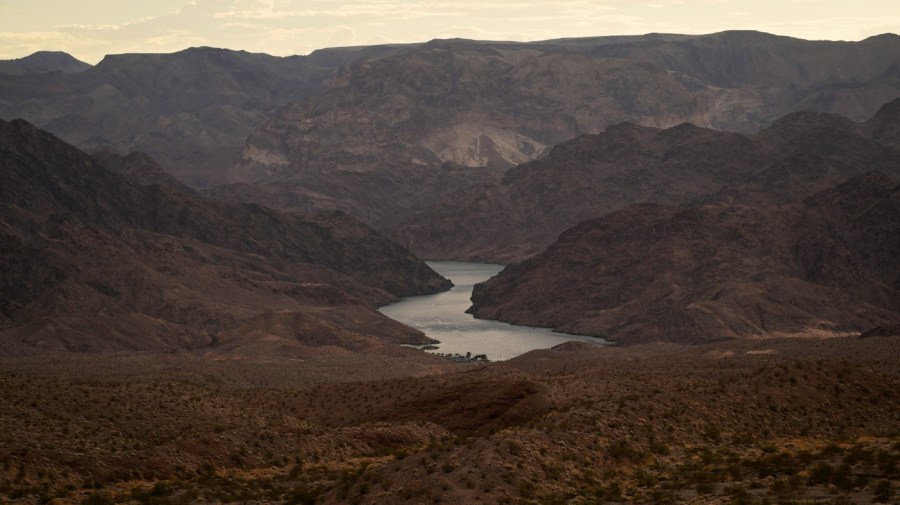
Lead negotiators from the Colorado River’s Upper Basin states expressed a dual sense of uncertainty and urgency on Tuesday, as a deadline to determine the fate of the entire system looms near.
“If you are in the Upper Basin states or probably anywhere across the West, you know it’s not looking so good right now,” said Becky Mitchell, director of Colorado’s Water Conservation Board.
Mitchell was addressing a meeting of the Upper Colorado River Commission, which also included federal Bureau of Reclamation representatives and the lead negotiators for the other Upper Basin states: Wyoming, Utah and New Mexico.
The commissioners convened to both discuss basin-wide hydrology as well as share updates on longer-term Colorado River negotiations, which have been occurring for more than a year with Lower Basin counterparts: Arizona, Nevada and California.
The talks concern a long-anticipated update of the Colorado River’s operational guidelines, which are set to expire at the end of 2026. These 2007 interim rules govern conservation policies for the 1,450-mile river, which provides water to about 40 million people in the U.S. and Mexico.
With the Upper and Lower basins still far from reaching any collaborative arrangement, the Biden administration in late November tried to propel the process forward — releasing a bullet-point list of five potential alternatives for the watershed’s long-term management.
Just days before President Trump’s inauguration, Biden’s team then released a detailed version of the alternatives, placing the Bureau of Reclamation on a path to issue a draft environmental impact statement — a key step in the federal environmental process — by this summer.
Chuck Cullom, executive director of the Upper Colorado River Basin, confirmed at the Tuesday meeting that this initial framework would need to be in place “by early summer of 2025,” in order to trigger the development of state-level implementation plans.
“Those are the types of agreements between states, and the basin states as a whole, that would be part of the foundation for whatever those post-2026 operations might be,” Cullom said, noting that some of those plans might require the passage of legislation.
The Bureau of Reclamation had initially given the states an early March 2024 deadline to submit a consensus-backed alternative for updated guidelines for the river’s management. But two days after that deadline, the basins ended up publishing competing proposals.
The Lower Basin states presented a proposal that incorporated reductions for themselves but also called for cuts across the entire watershed — calculating storage capacity not just on the massive Lake Powell and Lake Mead, but also on five smaller reservoirs, including three in the Upper Basin.
The Upper Basin states, meanwhile, issued plans that they said would consider real-time hydrological conditions in an area dependent upon mountain snowpack for its water supply.
Having received no unified vision among all seven states, Biden’s Bureau of Reclamation proposed a range of management solutions, none of which precisely match either basin’s proposal.
Most of the federal alternatives presented, however, require some level of consensus agreement, Cullom noted at the Tuesday meeting.
“A consensus is the best option out there for everyone, and I’m hopeful that we’ll get there,” Mitchell said. “That is the highest level of certainty that we will have as seven basin states.”
Mitchell stressed the importance of the states determining their own future, adding that all parties must “acknowledge that cuts are probable, possible and likely.”
“We need to do that for certainty, and everyone needs to do that,” she said. “We are committed to work with the Lower Basin states towards that seven-state consensus.”
Her Upper Basin colleagues offered similar perspectives, with Estevan Lopez of New Mexico and Brandon Gebhart of Wyoming both expressing their commitment to such collaboration.
“We are meeting with all of the states,” added Gene Shawcroft, Utah’s commissioner. “Discussions have been frank and fruitful.”
Shawcroft expressed optimism “that there is a box that we can work within that will allow us to come to a seven-state consensus,
“But certainly, there’s a lot of work yet to do,” he added.
As for the Colorado River’s hydrological conditions, Alex Pivarnik of the Bureau of Reclamation told the commissioners that Lake Powell — the main reservoir for the Upper Basin — is only 35 percent full, while Upper Colorado River system storage is sitting at 43 percent capacity and total system storage in both basins is at 42 percent.
“January was a really bad month for us in the basin,” Pivarnik said, noting that conditions were “pretty much dry” across all the states.
Pivarnik described the initial weeks of February as “kind of a make or break for us,” recognizing that precipitation has since increased substantially.
Mitchell echoed these sentiments, acknowledging that water officials have “been slightly optimistic because of the snow.”
“But it still does not look as good as we’d like,” she said.












